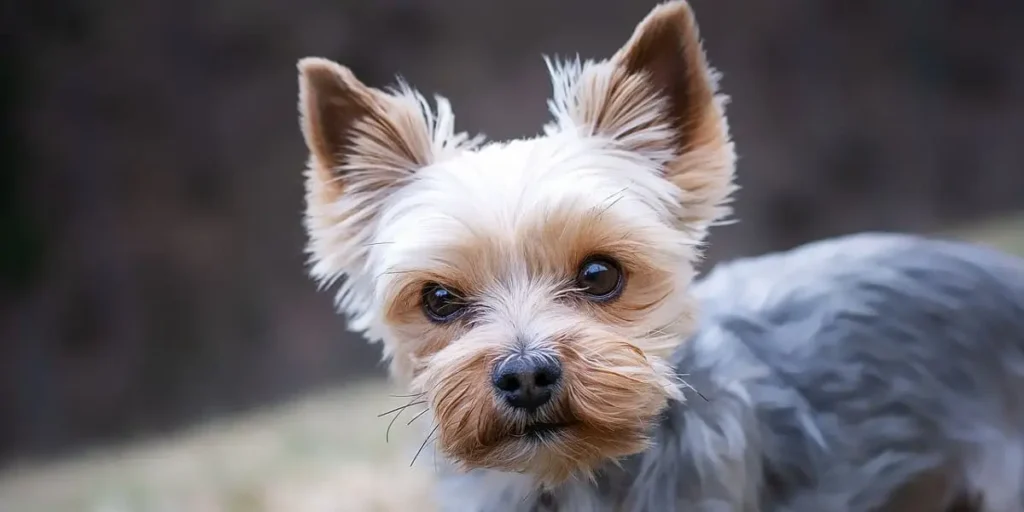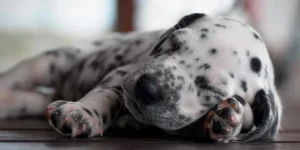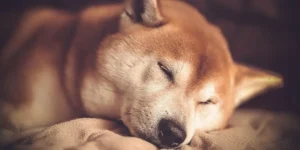Table of contents
The Yorkshire Terrier, despite its elegant looks, is a dog with a strong personality and often a nervous temperament. Primarily used as a companion dog, it is very affectionate toward its owner while showing a lively spirit of adventure. It needs plenty of love in return. Gentle with children but not always patient, it remains one of the most popular dogs in both the United States and France. It is also the smallest dog in the terrier family.
General Characteristics
- Coat type: Long
- Origin: Great Britain
- Size category: Small
- Head shape: Round
Weight and Height
- Female: 2–3 kg (4.4–6.6 lb), 15–25 cm (6–10 in)
- Male: 2–3 kg (4.4–6.6 lb), 15–25 cm (6–10 in)
History of the Breed
The breed’s origins go back to the Industrial Revolution in the early 19th century. Many textile workers left Scotland for Yorkshire, England, bringing their dogs with them. By crossing with local terriers, including the Maltese, the Yorkshire Terrier was created. Initially bred for rat hunting in mines and rabbit hunting in burrows, its small size and long hair were essential for extracting it from tight spaces. The official breed standard was established in 1898.
Physical Characteristics
- Coat: reasonably long on the body, exceptionally smooth and shiny.
- Color: dark steel blue with tan.
- Head: small and flat with a moderately long, bearded muzzle.
- Ears: small, V-shaped, erect.
- Eyes: dark, bright, expressive.
- Body: compact, straight back, slightly arched ribs.
- Tail: docked short, carried higher than back level, covered in hair.
Temperament and Character
Affectionate, loyal, spirited, and sometimes stubborn. Intelligent and alert, often barking easily, making it a good watchdog. Devoted yet impatient with overly playful children. Despite its delicate looks, it has a fiery, determined character.
Behavior with Others
- Children: friendly but can be impatient.
- Other animals: adaptable if socialized.
- Strangers: curious but cautious.
Education
The Yorkshire Terrier is intelligent but stubborn, needing firm early training. Its intelligence makes it adaptable but prone to barking, requiring consistent management.
Living Conditions
- Adapted to apartment life: Yes
- Good for novice owners: Yes
- Enjoys warm climates: Yes
- Tolerates cold: Moderately
Thrives indoors but needs daily walks. Coat should be protected during outings.
Health
- General robustness: Moderate
- Weight gain tendency: Medium
- Prone to joint, bone, and dental issues.
- Hypoallergenic breed: Yes
- Litter size: 4–5 puppies
- Health concerns: gingivitis, patellar luxation, PRA, cataracts, Legg-Perthes disease, congenital shunt.
- Occasional: skin disorders, entropion, hydrocephalus, hypoglycemia.
Life Expectancy
- 10–15 years
Grooming and Hygiene
Coat grows 1–1.5 cm/month, prone to tangles. Monthly professional grooming plus daily brushing required. Teeth, nails, eyes, and ears need regular care.
Price and Budget
- Purchase price: €1000–€1500 ($1100–$1600)
- Annual maintenance: €800–€850 ($850–$900)
Name Ideas
- Male: Benji, Coco, Guizmo, Junior, Lucky, Max, Nougat, Rocky, Snoopy, Titus
- Female: Agate, Bella, Chipie, Guess, Joy, Lola, Maya, Nougatine, Tessa, Zoe
Diet
High-quality dry food, about 40 g/day divided into 2 meals. Avoid fatty foods as Yorkies gain weight easily.
Physical Activity
- Athletic ability: Moderate
- Energy: High
- Playfulness: High
Despite small size, requires regular exercise and loves outdoor exploration.
Famous Yorkshire Terriers
Smoky, a female Yorkie, served in WWII with Corporal William A. Wynne, saving his life during a bombing and later becoming a war hero.
Competitions
Recognized by the FCI (Group 3 Terriers) and all major kennel clubs (AKC, ANKC, CKC, KC, NZKC, UKC).
FCI Information
FCI No. 86, Group 3 Terriers, recognized since 1954. Related breeds: Biewer Yorkshire, Silky Terrier, Airedale Terrier, Czech Terrier, Border Terrier, Fox Terrier.


